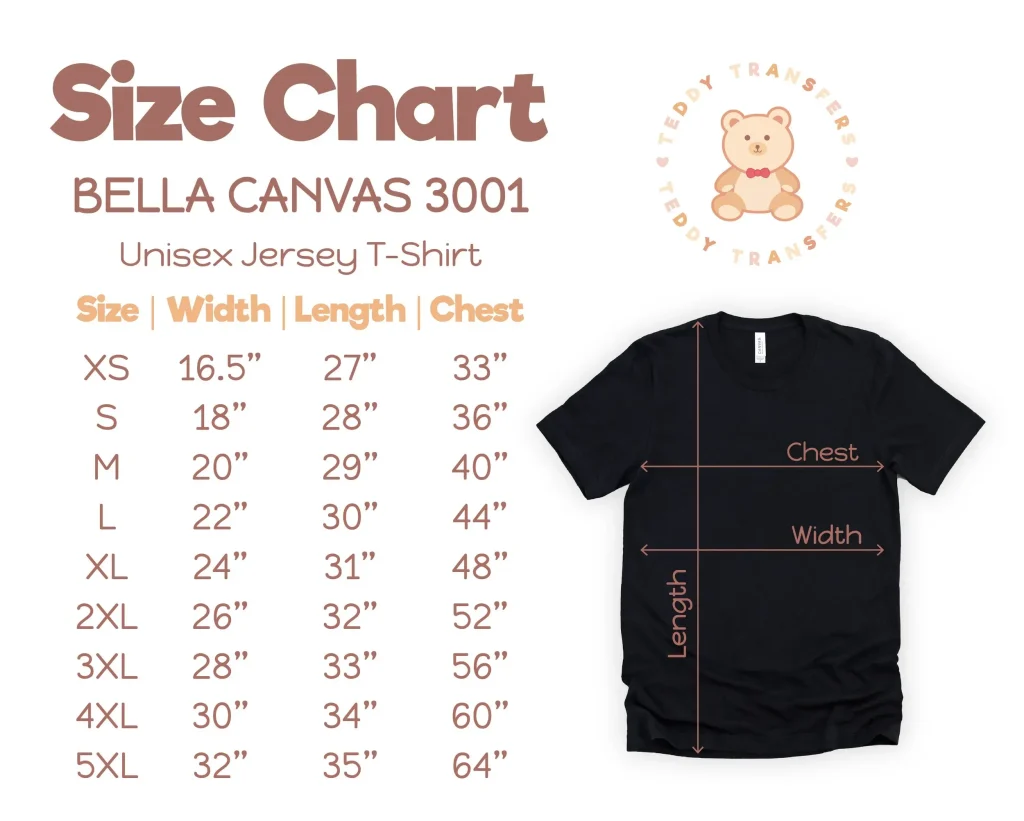DTF transfer sizes play a vital role in the success of your Direct-to-Film printing projects, influencing everything from design clarity to garment compatibility. Selecting the appropriate dimensions is essential, especially for those venturing into DTF printing for beginners, as it can significantly affect the final product’s aesthetic and durability. As we explore the best sizes for DTF transfers, you’ll discover how to navigate choosing DTF transfer dimensions effectively, ensuring that your designs resonate with your target audience. Additionally, adhering to DTF transfer guidelines will help maintain high quality and consistency across your prints. By keeping these DTF printing tips in mind, you can achieve stunning results that elevate your creations to the next level.
When discussing DTF printing, the significance of transfer dimensions cannot be overstated. Understanding the scale of your DTF transfers is crucial, especially in creating visually appealing designs that adhere well to various fabrics. This guide will help you navigate the intricacies of selecting the optimal dimensions to suit your specific project needs. Whether you refer to it as DTF film printing or dimension sizing for heat transfers, knowing how to approach this aspect of your work is essential for achieving professional-looking results. With a focus on effective size selection, you can enhance the impact of your print designs and ensure they align with current fashion trends.
Choosing DTF Transfer Dimensions: Key Considerations
When selecting DTF transfer dimensions, there are multiple factors at play, such as the intricacy of your design and the type of garment it will adorn. A complex design that features fine details will typically require a larger transfer size to ensure that every aspect is captured clearly. This is especially important for graphics that include text or intricate artwork. On the other hand, simpler designs might only need a smaller transfer, allowing for a subtle touch without overwhelming the fabric. It’s essential to find a balance that highlights the design while considering the overall aesthetic of the garment.
Additionally, consider the fit of the garment when choosing transfer sizes. For example, casual oversized t-shirts can handle larger size transfers comfortably, whereas form-fitting garments like fitted t-shirts may require more modest dimensions. This awareness of the garment type helps avoid disproportionate sizing that could detract from the overall look. By taking these factors into account, you can choose DTF transfer dimensions that complement both the design and the fabric, ensuring an eye-catching result.
DTF Printing Tips: Perfecting Your Dimensions
Perfecting your DTF transfer dimensions can be significantly enhanced by following certain printing tips. One effective method is to conduct test prints using various sizes to see how your designs translate onto your chosen fabric. This not only helps in visualizing the final product but also aids in understanding how different sizes will hold up in terms of durability and aesthetic appeal against different garment types. The more you experiment, the more familiar you’ll become with the ideal dimensions for your specific designs.
Moreover, it is crucial to adjust your DTF printing settings to match your transfer size. For larger transfers, you might need to modify your heat press settings, such as temperature and pressure, to ensure optimal adhesion. The application process can greatly affect the transfer’s longevity, especially for larger dimensions where heat might not evenly distribute. Paying attention to these printing specifics will lead to better quality outputs that not only look great initially but also stand the test of time.
Best Sizes for DTF Transfers: Industry Standards
While there’s a range of sizes suitable for DTF transfers, industry standards suggest that widths between 10 to 16 inches are generally acceptable for most applications. This size range allows for visibility while maintaining a professional look, regardless of whether the design is positioned on the front, back, or sleeves of garments. Understanding these standard sizes can guide you in making informed choices that fit within popular practice, ensuring your work conforms to customer expectations.
Moreover, keeping abreast of industry trends can help specify the best sizes for DTF transfers. Recent fashion movements highlight a growing preference for larger, bolder designs, particularly among younger consumers. By selecting sizes that align with these trends, you can appeal to your target market effectively while still providing high-quality finishes. This not only helps in marketing your designs but also positions your offerings as modern and relevant within the competitive landscape of garment printing.
DTF Transfer Guidelines: Ensuring Quality and Precision
Acquainting yourself with DTF transfer guidelines is essential to achieving both quality and precision in your creations. As a beginner in DTF printing, leveraging these guidelines can significantly impact your final product. To start, be sure to incorporate precise measurements when designing your transfers. Software with measurement tools can assist in creating accurate outlines, thereby helping to determine the most appropriate sizes for your designs. Stick to recommended dimensions for specific garments and types of designs that ensure clarity and visibility.
Another key guideline involves adhering to proper application techniques. Understanding the relationship between transfer size, heat settings, and pressure can lead to more durable designs that resist peeling or fading. For instance, larger transfers may necessitate a longer pressing time or different temperature settings to achieve optimal bonding with the fabric. Following these protocols will not only enhance the quality of your transfers but also establish your reputation as a reliable creator in the DTF printing community.
DTF Printing for Beginners: Start with the Right Dimensions
For those new to DTF printing, starting with the right dimensions is critical to ensuring successful results. Beginners are often overwhelmed by the options available and may struggle to find the best sizes for their projects. As an entry point, it is recommended to familiarize yourself with the standard dimensions—10 to 16 inches wide for most designs—before venturing into personalized sizing. This foundational knowledge will streamline your workflow and allow you to focus on other aspects of design and application.
In addition, exploring the nuances of applying DTF transfers can greatly benefit beginners. Engaging in trial runs with different dimensions allows for a hands-on understanding of how sizes affect the final appearance. It’s also an opportunity to develop skills in adjusting designs for optimal fit on various garment types. Emphasizing learning through practical experience can result in a more comfortable and confident approach to DTF printing, ultimately leading to better quality work and customer satisfaction.
Maximizing Customer Satisfaction with DTF Transfer Sizes
Understanding customer preferences can significantly enhance the satisfaction rate associated with DTF transfers. When you offer a range of sizes tailored to your audience’s desires, you bridge the gap between quality and client expectations. For instance, providing a selection of transfer sizes allows customers to choose designs that best fit their garments and personal style. This attentiveness to their needs fosters loyalty and encourages repeat business, as clients appreciate businesses that value their input.
Additionally, implementing feedback mechanisms can help in refining your sizing strategy for DTF transfers. After completing projects, solicit feedback on the size, clarity, and overall satisfaction with the transfers. This information is invaluable for making informed adjustments and ultimately delivers products that align more closely with what your customers envision. By prioritizing customer satisfaction, you strengthen your brand’s reputation and enhance your potential for long-term success in the DTF printing industry.
Frequently Asked Questions
What factors should I consider when choosing DTF transfer sizes?
When choosing DTF transfer sizes, consider design complexity, garment size and type, application area, ink specifications, and target market trends. Larger designs require more space to maintain clarity and aesthetics, while the garment’s dimensions influence how well the transfer fits and looks.
What are the best sizes for DTF transfers on different garments?
The best sizes for DTF transfers typically range from 10 to 16 inches in width. Larger garments like hoodies can handle bigger designs, while smaller fitted tees may need more modest dimensions to balance the overall look.
How does design complexity affect DTF transfer dimensions?
Design complexity significantly affects DTF transfer dimensions. Intricate designs often require larger transfers to ensure all details are visible and clear, while simpler graphics can achieve impact within smaller sizes, preserving their effectiveness.
How can I ensure durability in my DTF transfers based on size?
To ensure durability in DTF transfers, adhere to appropriate size choices based on application technique. Larger transfers may detach more easily if not applied properly, so it’s crucial to follow optimal heat press settings during the process to enhance longevity.
Are there any DTF printing tips for beginners regarding transfer sizes?
Yes! Beginners should conduct test runs with various transfer sizes to see what works best on their chosen garments. Utilizing design software for precise measurements can also aid in selecting the right DTF transfer sizes for different projects.
What are common DTF transfer guidelines I should follow for size selection?
Common DTF transfer guidelines include testing different dimensions, considering garment types and designs, and staying updated on current fashion trends to ensure that the chosen sizes resonate well with the target audience.
| Key Points | Details |
|---|---|
| What is DTF Transfer? | DTF transfer involves printing designs onto a film that is then applied to textiles using water-based inks. |
| Why Size Matters for DTF Transfers | Correct size affects visual appeal and durability of the final product. |
| Design Complexity | Larger transfers are needed for intricate designs to maintain clarity. |
| Garment Size and Type | Larger garments can accommodate bigger designs; type impacts sizing requirements. |
| Application Area | Transfer size may vary depending on placement (front, back, sleeves) of the design. |
| Ink Specifications | Water-based inks might require careful consideration of size for consistency. |
| Target Market Trends | Research trends to ensure designs resonate with the target demographic. |
| Industry Best Practices | Conduct tests, ensure durability, and use graphic design software for precise sizing. |
Summary
DTF transfer sizes are crucial to achieving optimal results in Direct-to-Film printing. Understanding the dimensions required for specific designs and garment types ensures a seamless and visually appealing application. By considering factors such as design complexity, garment specifications, and current market trends, creators can strategically select DTF transfer sizes. Adhering to industry best practices and utilizing design software allows for a more precise execution, maximizing both durability and aesthetic appeal. With careful planning and attention to detail, each project can achieve impressive and long-lasting results.



